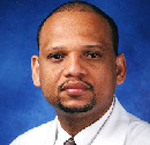
Not ALL Prostate Cancer Deserves Immediate Treatment. Learn the Facts
Doctor Noel Saint Beauvoir is the first Haitian-trained fellow accepted at the Bladder Health and Reconstructive Urology Institute training program under the direction of Dr. Angelo E. Gousse.
We now know that not all prostate cancers are deadly. Patients with low risk, low Gleason score ( less than 7 ) , low PSA ( less than 10) , low percentage of positive cores ( less than 30 % ), low number of positive cores ( less than 3 ) are at very low risk of dying of prostate cancer and probably do not need any treatment. Active surveillance has been shown to be equivalent to treatment in these men in long term studies. Active surveillance means exactly what it spells out. The patient must maintain active follow up with the urologist. Often, repeat PSA, rectal examination, and prostate biopsy are indicated at specified time intervals ,depending on the case.
Active surveillance is becoming a widely adopted alternative for some men with low risk prostate cancer. Instead of having immediate treatment such a surgery or radiation , men on active surveillance are monitored with periodic repeated biopsies, physical examinations of the prostate, and prostatic -specific antigen (PSA) blood tests. Treatment begins only when the cancer shows signs of progression, usually as revealed by a rise in PSA or a repeated biopsy which shows more cancer or more aggressive cancer cells .
But is it safe to wait until the cancer possibly progresses ? A recent study adds to growing evidence that it is safe to watch low grade minimal prostate cancer in most men.
The more robust information is based on data gathered at Johns Hopkins Hospital, in Baltimore, Maryland, the site of a long-running active surveillance ( active monitoring of men with low risk prostate cancer ) program. The authors studied nearly 1,300 men who were enrolled in active surveillance between 1995 and 2014. Most of the men had “ low-risk cancer,” meaning that their PSA levels weren’t very high( Less than 10 ng/ml ) at diagnosis and that only small amounts ( less than 5 %) of low-grade cancer ( Gleason less than 7/10 ) had been found in at most 2 cores of a standard 12-core biopsy. The rest were in a “low-risk” category, meaning that low-grade cancer had been detected in no more than 5 cores.
The men averaged 66 years of age at diagnosis. By the time the analysis was finished, 49 of the men had died ( mostly of unrelated causes ) , but only 2 / 1300 of them died from prostate cancer. The cancer-specific survival rates in both the very low-risk and low-risk categories combined exceeded 99% at both 10- and 15-year follow-ups, and the predominant cause of death by far was heart disease.
“These results indicate that men with favorable-risk cancer should be encouraged to consider active surveillance instead of treatment given the low likelihood of harm from their diagnosis. It’s important to point out that prostate cancer can get worse on active surveillance. During this study, 22% of the very low-risk men and 31% of the low-risk men eventually required treatment ( surgery or radiation ) within 15 years. But by the time treatment was initiated, the men had been on active surveillance for an average of 8.5 years.
Very low-risk men (low PSA at diagnosis and low Gleason Score) clearly make the best candidates for active surveillance. Older men and men with serious health problems should also strongly consider active surveillance when eligible.
Some researchers feel that some men may feel strongly that they don’t want to live with cancer and be subjected to repeat prostate biopsies, which can cause them to opt out of active surveillance in favor of treatment.
The study adds important information about the growing practice of active surveillance for certain populations of men with low risk prostate cancer.
Men should not panic after prostate cancer diagnosis and only consider prostate cancer treatment when indicated. This approach protects these men from the adverse effects of prostate cancer treatment (erectile dysfunction and incontinence ) . Men with newly diagnosed prostate cancer should ask their treating urologist whether they are a candidate for active surveillance.
Angelo E. Gousse, MD
Clinical Professor of Urology – Herbert Wertheim College of Medicine – FIU
Voluntary Professor of Urology – University of Miami , Miller School of Medicine
Director of Fellowship:Female Urology,Voiding Dysfunction, Reconstruction
Memorial Hospital Miramar, South Broward Hospital District
1951 SW 172 Avenue, Suite 305, Miramar, FL, 33029
Tel: 954-362-2720 Fax: 954-362-2761 www.bladder-health.net
